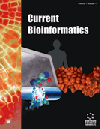
Full text loading...
We use cookies to track usage and preferences.I Understand
Currently, various types of peptides have broad implications for human health and disease. Some drug peptides play significant roles in sensory science, drug research, and cancer biology. The prediction and classification of peptide sequences are of significant importance to various industries. However, predicting peptide sequences through biological experiments is a time-consuming and expensive process. Moreover, the task of protein sequence classification and prediction faces challenges due to the high dimensionality, nonlinearity, and irregularity of protein sequence data, along with the presence of numerous unknown or unlabeled protein sequences. Therefore, an accurate and efficient method for predicting peptide category is necessary.
In our work, we used two pre-trained models to extract sequence features, TextCNN (Convolutional Neural Networks for Text Classification) and Transformer. We extracted the overall semantic information of the sequences using Transformer Encoder and extracted the local semantic information between sequences using TextCNN and concatenated them into a new feature. Finally, we used the concatenated feature for classification prediction. To validate this approach, we conducted experiments on the BP dataset, THP dataset and DPP-IV dataset and compared them with some pre-trained models.
Since TextCNN and Transformer Encoder extract features from different perspectives, the concatenated feature contains multi-view information, which improves the accuracy of the peptide predictor.
Ultimately, our model demonstrated superior metrics, highlighting its efficacy in peptide sequence prediction and classification.

Article metrics loading...

Full text loading...
References


Data & Media loading...

